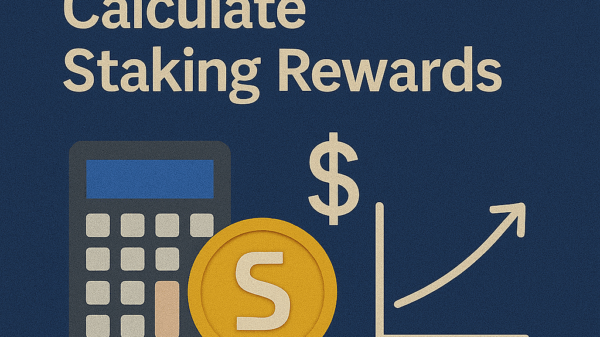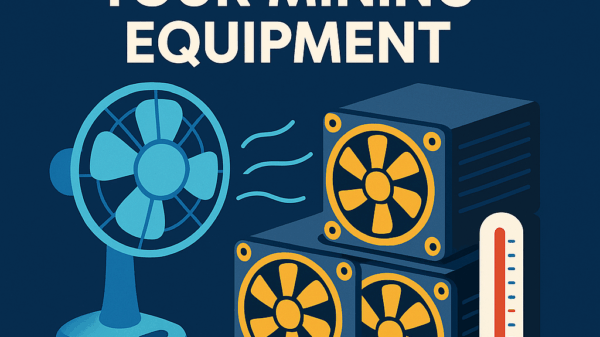How to Use the RSI Indicator in Trading
By Jason Miller – Crypto Writer 10.expert 🧠 Covering Bitcoin, altcoins, blockchain & Web3.
As a crypto writer and analyst, I spend a significant amount of time poring over charts, trying to understand the nuances of market behavior. While price action is king, technical indicators provide invaluable insights into the underlying momentum and health of a trend. Among the vast array of indicators, the Relative Strength Index (RSI) stands out as one of the most popular and versatile tools for traders, especially in volatile markets like crypto.
The RSI is an oscillator, meaning it moves within a defined range, making it excellent for identifying overbought or oversold conditions. However, its utility extends far beyond just these basic signals. Let’s delve into how you can effectively use the RSI indicator in your crypto trading.
How to Use the RSI Indicator in Trading: Unlocking Market Momentum 🚀📊
The Relative Strength Index (RSI) is a momentum oscillator that measures the speed and change of price movements. Developed by J. Welles Wilder Jr., it’s a staple in technical analysis for a reason: its ability to provide clear signals about market strength and potential reversals.
Understanding the RSI: Momentum Oscillator Explained 📈
The RSI oscillates between 0 and 100. It measures the magnitude of recent price gains against recent price losses over a specified period (default is 14 periods, which can be days, hours, or minutes depending on your chart’s timeframe). A higher RSI value means a stronger momentum of recent gains, and vice versa.
Adding RSI to Your Chart: Getting Started 💻
Most trading platforms (like TradingView, Binance, Bybit, Kraken) allow you to easily add the RSI indicator. Simply go to the “Indicators” or “Studies” section and search for “RSI” or “Relative Strength Index.” It will typically appear in a separate panel below your main price chart.
The Standard Settings: 14 Periods, 70/30 Levels ⚙️
The default and most commonly used setting for RSI is a 14-period calculation. The indicator also features horizontal lines at 70 and 30. These levels are crucial for identifying overbought and oversold conditions:
* Above 70: Traditionally considered “overbought,” suggesting the asset might be due for a pullback.
* Below 30: Traditionally considered “oversold,” suggesting the asset might be due for a bounce.
Overbought and Oversold: Not Always a Direct Buy/Sell Signal ⚠️

While the 70/30 levels are key, it’s a common beginner mistake to treat them as automatic buy/sell signals.
* In Strong Uptrends: The RSI can stay above 70 for extended periods, indicating strong bullish momentum, not necessarily an imminent reversal.
* In Strong Downtrends: Similarly, the RSI can remain below 30, signaling strong bearish momentum.
Always consider the broader trend before acting on overbought/oversold signals in isolation.
The 50-Level Crossover: Confirming Trend Direction ➡️
The 50-level on the RSI can act as a centerline for trend confirmation:
* RSI above 50: Suggests that bullish momentum is dominant.
* RSI below 50: Suggests that bearish momentum is dominant.
A crossover of the 50-line can sometimes signal a shift in the short-term trend.
RSI Divergence: A Powerful Reversal Signal 🔄
Divergence occurs when the price of an asset and the RSI move in opposite directions, often signaling a potential trend reversal. This is one of the strongest signals the RSI can provide:
* Bullish Divergence: Price makes a lower low, but RSI makes a higher low. This suggests that the bearish momentum is weakening, and a reversal to the upside might be coming.
* Bearish Divergence: Price makes a higher high, but RSI makes a lower high. This indicates that bullish momentum is fading, and a reversal to the downside might be imminent.
Hidden Divergence: Confirming Trend Continuation ➡️
Less commonly discussed but equally important are hidden divergences, which can signal trend continuation:
* Hidden Bullish Divergence: Price makes a higher low, but RSI makes a lower low. This reinforces the existing uptrend.
* Hidden Bearish Divergence: Price makes a lower high, but RSI makes a higher high. This reinforces the existing downtrend.
Failure Swings: Another Reversal Indication 🧩
Wilder, the creator of RSI, identified “failure swings” as strong indicators of reversal, independent of price action:
* Bullish Failure Swing: RSI drops below 30, then bounces above 30, then pulls back but stays above 30, then breaks its prior peak.
* Bearish Failure Swing: RSI rises above 70, then pulls back below 70, then bounces but stays below 70, then breaks its prior low.
Multiple Timeframe Analysis with RSI 🕰️
For more reliable signals, use the RSI on multiple timeframes.
* Use a higher timeframe (e.g., daily chart) to identify the broader trend.
* Then, use a lower timeframe (e.g., 4-hour or 1-hour chart) to pinpoint entry/exit points that align with the higher timeframe trend, often looking for RSI signals in the direction of the dominant trend.
Adjusting RSI Settings: For Different Trading Styles 🎨
While 14 periods is standard, you can adjust the RSI setting:
* Shorter Periods (e.g., 7 or 9): Makes the RSI more sensitive to price changes, generating more signals (useful for scalping or very short-term trading, but more prone to false signals).
* Longer Periods (e.g., 21): Makes the RSI smoother and less reactive, reducing noise and providing fewer, but potentially more reliable, signals (useful for swing trading or longer-term analysis).
Combining RSI with Other Indicators for Confirmation 🤝
RSI is powerful, but it’s best used in conjunction with other technical analysis tools for confirmation:
* Moving Averages (MAs): Use MAs to confirm the overall trend (e.g., only take bullish RSI signals if price is above a key MA).
* Support & Resistance Levels: Look for RSI signals to occur around key support/resistance zones.
* Volume: High volume accompanying an RSI signal (e.g., a bounce from oversold) adds conviction.
* MACD: Use MACD to confirm momentum and trend changes alongside RSI signals.
RSI in Trending Markets vs. Ranging Markets 🎯
The RSI tends to be most effective in ranging (sideways) markets for identifying overbought/oversold conditions and potential reversals. In strong trending markets, the RSI can stay at extreme levels, and counter-trend signals (e.g., selling just because RSI is overbought in a strong uptrend) can lead to missed opportunities or losses. In trends, consider using RSI for pullback entries (e.g., in an uptrend, buying when RSI pulls back to 40-50).
Risk Management: Always Have a Stop-Loss 🛡️
No indicator is foolproof. Always implement sound risk management practices, including setting stop-loss orders for every trade, regardless of the RSI signal.
Practice and Backtesting 🧑💻
The best way to learn how to effectively use the RSI is through practice. Use demo accounts or paper trading to apply these strategies without risking real capital. Backtest your strategies on historical data to see how the RSI performed in different market conditions.
Limitations of RSI: Not a Crystal Ball 🔮
RSI is a lagging indicator, meaning it’s based on past price action. It doesn’t predict the future with certainty. It provides probabilities and insights into momentum. Relying solely on RSI can lead to false signals, especially in highly volatile markets or during unexpected news events.
By mastering the nuances of the RSI indicator, you’ll add a powerful tool to your technical analysis arsenal, enabling you to better understand market dynamics and make more confident trading decisions in the exciting world of crypto.








